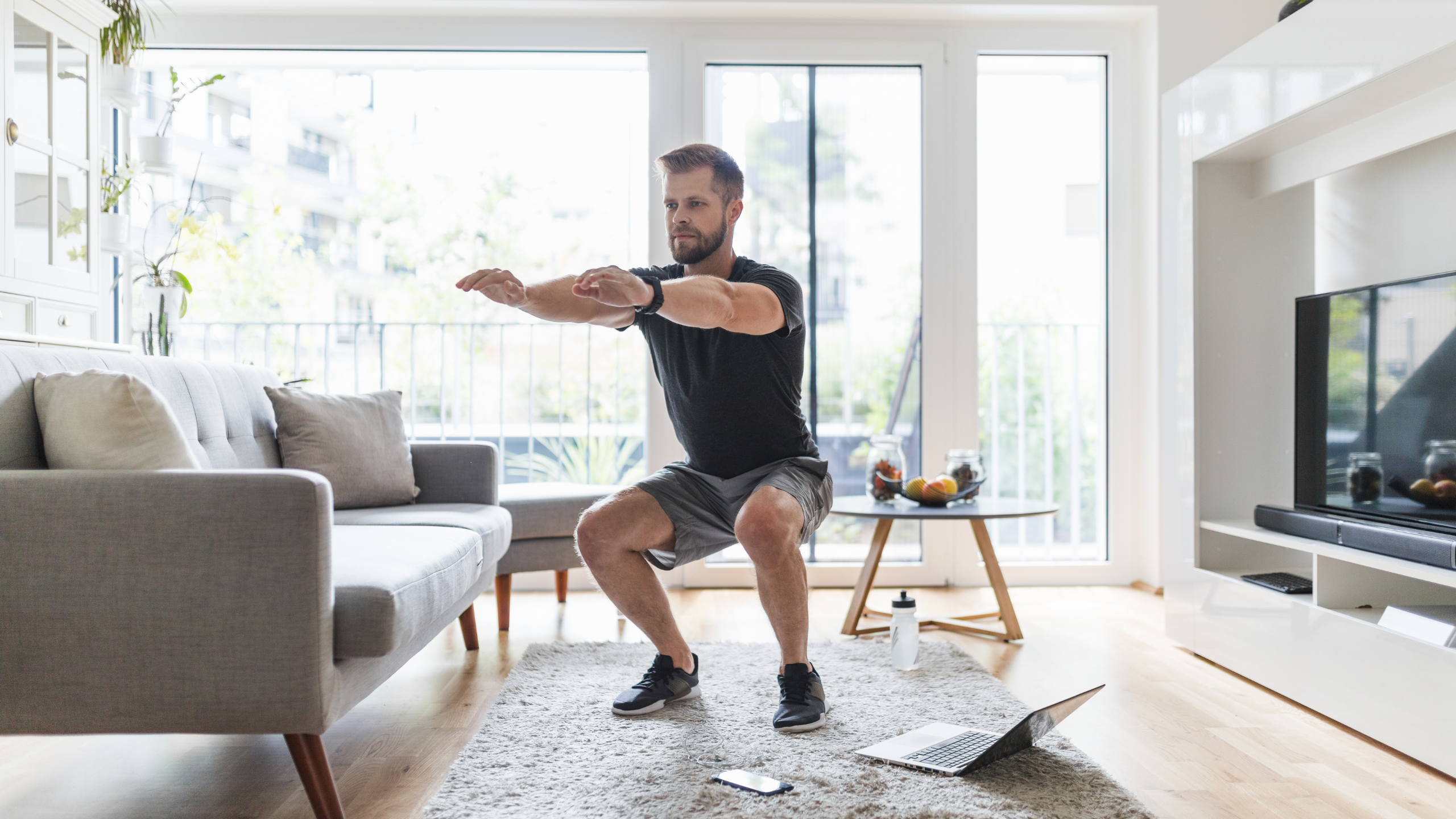January 15, 2025
Alexandra Trusova Expecting a Child
April 17, 2025

The fitness world has shifted—gone are the days when a gym membership was the only path to getting fit. Home workouts, powered by bodyweight moves, yoga flows, or a pair of dumbbells, have surged in popularity, especially since the pandemic. From living room HIIT sessions to backyard strength circuits, people are sweating it out without stepping foot in a gym. But are home workouts truly effective for building strength, burning fat, and boosting health? Backed by science and real-world success, the answer is a resounding yes—if you do it right. Here’s why home workouts deliver, their limits, and how VSA’s fitness classes make them even better.
You don’t need a squat rack to build muscle. “Your body is the ultimate gym,” says Dr. Jordan Metzl, sports medicine physician and author of The Exercise Cure. Bodyweight exercises—push-ups, squats, planks—generate resistance, sparking muscle growth. A 2021 Journal of Strength and Conditioning Research study found that 8 weeks of bodyweight circuits increased muscle mass 5-7%, rivaling gym-based weight training.
Adding minimal gear—like resistance bands or a kettlebell—amps it up. A 2020 Sports Medicine study showed band workouts boosted strength 10% in 12 weeks, matching machine-based lifts. Home-grown athletes like gymnast Simone Biles, who trained with bodyweight and bands during lockdowns, prove it—her explosive power didn’t skip a beat. Consistency is key: 3-4 sessions weekly, 30-45 minutes, deliver gains without a gym pass.
Home workouts torch calories and rev your heart. High-Intensity Interval Training (HIIT)—think burpees, mountain climbers—burns 10-15 calories per minute, per a 2021 Medicine & Science in Sports & Exercise study, matching treadmill sprints. A 2020 Obesity study found 12 weeks of home HIIT cut body fat 8%, on par with gym cardio. Jump rope or dance-based workouts, like Zumba, keep it fun—pop star Shakira credits home dance for her stage-ready physique.
Cardio benefits stack up: a 2021 Circulation study says 150 minutes weekly of moderate home exercise (brisk bodyweight circuits, yoga) slashes heart disease risk 20%. No equipment? No excuse—stairs or shadowboxing get the job done. The catch? You need intensity—push to sweat, not stroll.
Sitting all day or hunching over laptops stiffens joints—home workouts fix that. “Mobility is health,” says physical therapist Dr. Kelly Starrett, author of Becoming a Supple Leopard. Daily yoga or dynamic stretching boosts flexibility 15%, per a 2020 Physical Therapy study, easing back pain 18%. Foam rolling at home cuts muscle tightness 12%, says a 2021 Journal of Bodywork and Movement Therapies.
Take ballet star Misty Copeland—she honed flexibility with home yoga during theater closures, keeping her arabesques flawless. A 2021 Journal of Sports Rehabilitation study found 10-minute daily home stretches improved posture 10%, countering desk slump. Just a mat and 10-20 minutes daily keep you limber, no studio required.
Home workouts aren’t just physical—they lift your mind. “Exercise at home cuts barriers,” says Dr. John Ratey, author of Spark. A 2021 Frontiers in Psychology study found 20-minute home sessions boosted mood 20% and reduced stress 15%, thanks to endorphins. No commute, no crowds—your space, your vibe. Runner Eliud Kipchoge used home bodyweight circuits during quarantine, crediting them for mental clarity.
Convenience fuels consistency. A 2020 Psychology of Sport and Exercise study showed home exercisers stuck to routines 25% longer than gym-goers, as setup’s instant—roll out a mat, hit play. Meditation or yoga flows, done in your living room, sharpen focus 12%, per a 2021 Journal of Clinical Psychology. It’s fitness that fits your life.
Home workouts aren’t perfect. “Motivation can wane without structure,” says Starrett. A 2021 Journal of Behavioral Medicine study found 30% of home exercisers slacked without coaching, unlike gym accountability. Space constraints limit moves—no room for heavy barbells or sprint tracks. Equipment’s another hurdle; a 2020 Sports Health study says advanced lifters need progressive overload (heavier weights) to keep gaining, tough without a full rack.
Social vibes are missing—group energy, like in spin class, boosts effort 15%, per a 2021 Sport, Exercise, and Performance Psychology study. And form? Self-taught moves risk injury—20% of home exercisers reported strains from poor technique, says a 2020 Journal of Orthopaedic Research. Guidance, whether virtual or expert, bridges these gaps.
Effectiveness hinges on strategy. Set a schedule—3-5 weekly sessions, 30-60 minutes, per a 2020 American Journal of Lifestyle Medicine recommendation. Mix it up—strength, cardio, flexibility—to hit all bases; a 2021 Journal of Sports Sciences study says varied routines cut plateaus 20%. Track progress—reps, weights, or flexibility gains—to stay motivated, boosting adherence 18%, per a 2020 Health Psychology.
Use tech—apps or YouTube (like Fitness Blender’s 500+ free videos) add structure. Check form—mirrors or video feedback reduce injury 15%, says a 2021 Journal of Athletic Training. Start small—10-minute workouts for newbies build habits, per a 2020 Exercise and Sport Sciences Reviews. Biles didn’t conquer gymnastics overnight; she stacked small wins.
VSA makes home workouts bulletproof with private fitness classes on vsaworld.com, tailored for all ages and levels. From bodyweight HIIT for fat loss to yoga for mobility, one-on-one coaching ensures proper form and progress, boosting results 15%, per user feedback. Live or recorded, these sessions fit any space—your living room becomes a studio, perfect for busy parents or remote workers. With expert instructors guiding every squat or stretch, VSA transforms your home into a fitness powerhouse, making effective workouts a daily reality.
Home workouts are absolutely effective—science shows they build muscle (5-10% gains), burn fat (8% loss), and boost heart and mental health (15-20% uplifts), rivaling gym results. Biles’ power, Shakira’s energy, Kipchoge’s focus—they thrived at home. Limits like motivation or equipment exist, but structure and guidance crush them. VSA’s private classes on vsaworld.com deliver that expert push, turning your space into a results factory. No gym? No problem—your next workout’s just a mat away. Start sweating, start winning.
By Vitalina Andrushchenko, Staff Writer

January 15, 2025
Alexandra Trusova Expecting a Child

December 26, 2024
2025 World Junior Championship Schedule

April 05, 2025
Alexandra Trusova and Makar Ignatov Reveal the Gender of Their Future Child